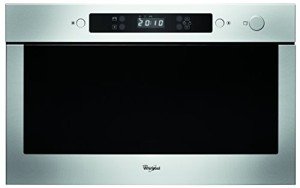What Is Microwave Built? Heck What Is Microwave Built?
페이지 정보

본문
 How is a Microwave built in microwave and oven combo?
How is a Microwave built in microwave and oven combo?Microwaves have taken household convenience to a whole new level. They can be positioned in wall cabinets or on top of kitchen islands. They are constructed from a variety of materials.
The cavity magnetron tube that emits microwaves was first invented in 1940 at Birmingham University in England. Percy Spencer discovered that this device can cook food after watching the corn pop and eggs cook.
Raw Materials
Microwave (MW), heating is growing in popularity in the field of material processing due to its inherent advantages such as faster heating and uniform heating. Its non-contact nature, low energy consumption, and quicker heating are other advantages. Heating with MW is used in various engineering materials such as ceramics, metals and composites. Recently, it was also modified for bulk metal joins, making dissimilar metallic powders clad on metallic substrates, and casting.
Metal is the most important material used in microwave ovens. It is mined from the earth through processes that require lots of energy and release greenhouse gases. The second major material is plastic, which originates from natural organic substances such as cellulose and crude oil. Plastic production produces indirect greenhouse gases due to the use of fossil fuels for electricity and heat, and direct emissions from chemical processes like the production of phthalates and Bisphenol A.
After the raw materials are obtained, they undergo extensive manufacturing and quality control to ensure they are in compliance with federal standards. During the manufacturing process there are various emissions and wastes, such as solvents, oils and dust, are produced. The finished product is shipped to retailers and then to consumers. The majority of microwaves are transported via truck, which also requires significant amounts of energy and generates greenhouse gases.
 After purchasing a microwave, it is typically used for several years until it becomes outdated and removed. Since the life span of microwaves is limited recycling and disposal options are crucial to reduce emissions and waste.
After purchasing a microwave, it is typically used for several years until it becomes outdated and removed. Since the life span of microwaves is limited recycling and disposal options are crucial to reduce emissions and waste.Design
Microwave ovens cook food by emitting electromagnetic waves in the microwave region (300 MHz - 300 GHz). The microwave oven cooks food by passing the radiation through it. Microwave ovens have been designed to protect against the harmful effects of radiation. This involves arcing, which could harm the oven as well as the food inside. There are a variety of microwave ovens that are available on the market, each with their own pros and cons. Consider the size of your kitchen, its size and the cooking requirements when selecting the right microwave. For example, if you have a small built in microwave oven counter space, consider a built in oven and microwave oven-in model that tucks the appliance away.
The design of a best integrated microwave oven inbuilt microwave (Recommended Website) oven begins with the purchase of raw materials. They are then processed into the various parts. These include the oven cavity and frame, turntable, glass tray magnetron tube (with capacitor and transformer), diode, waveguide, as well as electromechanical components (motors relays, switches, and motors). The casing is typically made of metal, like galvanized steel, aluminum or brass.
The microwave is packaged and tested following the assembly. The packaging is usually composed of recycled materials like cardboard and paper, or recyclable plastics, such as acrylonitrile butadiene styrene, polyethylene terephthalate, or polyvinyl chloride.
The new microwaves are loaded onto transport tools like planes, ships or automobiles. These tools use fossil fuels to transform chemical energy into mechanical energy which is used to move the microwaves from their location to the users. Once the microwaves have been delivered to the customer, they can be plugged in by the user and used. This is the part of the life cycle where it consumes the most energy and produces the most emissions, such as carbon dioxide.
Manufacture
Microwave ovens are among the most sought-after appliances in modern kitchens. What exactly makes a microwavable work? To find out, let's take an in-depth look at the process of putting together this essential appliance in your home.
The basic materials required to build microwave ovens include metals, plastic components and other electrical components. These can be obtained from the earth, but certain parts require processing in order to create them. The manufacturing process also requires the use of energy, resulting in the emission of greenhouse gases. The environmental impact of microwaves is mostly due to this stage of production.
In the manufacturing phase, the majority of the material is assembled by automated machines. The assembly process is carried out in the factory where workers are working on a conveyor. Workers utilize a machine to form sheet metal into the outer case and door. After the frame has been made and cleaned, it is then rinsed with an alkaline cleaner in order to remove oil and dirt. The frame is then put together with screws and bolts to create a safe chassis.
Once the chassis is formed after which the magnetron and other components are installed. The magnetron emits microwaves which causes water molecules to increase in temperature. In this phase, there are security risks like the possibility that plasticizers will get into the food, or the oven may explode if it is empty.
Once the microwave is fully constructed, it goes through extensive testing and inspection to make sure that it meets federal standards. Following this the microwave is packed for distribution to consumers. Transporting microwaves from the manufacturing facility to retailers could be an environmental burden. The equipment used to transport and deliver the microwaves use fossil fuels, which release carbon dioxide and other greenhouse gases into the air.
Testing
Microwaves are a type of electromagnetic radiation that forms part of the electromagnetic wave spectrum. This spectrum is made up of a variety of kinds of energy that move through space, including radio waves, visible light, infrared energy, and ultraviolet radiation. Microwaves can be used to heat food by the process of microwave heating, which makes use of electromagnetic radiation to cause the water molecules within the food to move and rotate. This allows food to be heated without heating the air around it or altering its physical structure.
Microwaving food is a safe method to heat food since the microwave radiation doesn't affect the food's cells or cause it to become radioactive. Microwaves should not be used by those with pacemakers since they can interfere with electrical signals generated by certain electronic cardiac devices. This issue has been resolved by using special shielding.
Some of the chemicals that are used in microwave ovens are harmful to your health, including bisphenol A (BPA) and phthalates. Several studies have shown that BPA is able to leach from plastic containers into food items, and phthalates are suspected to be linked to an increase in the chance of having reproductive issues. In addition, microwave radiation can damage the eye tissue and cause cataracts.
The test procedures of today's NOPR requires that microwave ovens are tested in their microwave-only cooking mode and convection-microwave cooking modes in order to determine the energy consumption of the appliance under typical usage conditions. The test procedure uses a mixture of water and the basic ingredients to simulate food that would be heated in the integrated combination microwave. The mixtures are then placed into a borosilicate glass container, heated up in the microwave, then tested for thermal efficiency.
Packaging
Many microwave-ready dishes employ a special process of packaging known as modified atmospheric packaging (MAP). This packaging method utilizes oxygen-eliminating gas to prolong the shelf-life of food that is pre-cooked. These gases are often made up of carbon dioxide, oxygen pure as well as nitrogen, and work by removing excess oxygen from the food's atmosphere. This prevents spoilage and extends the shelf-life of the meal.
The MAP method is also used to package meat products such as frozen patties of beef or steaks. These packages contain a nonwoven film that absorbs moisture and helps to keep the food fresh and moist for longer. This type of packaging minimizes waste as it reduces the amount of air and water that is lost in the heating process.
When choosing a microwave, consumers must take into consideration the size and power level as in addition to other features, such as defrost settings and sensor cooking. These features can make cooking more efficient, but it's essential to think about the frequency at which these features will be used to avoid paying for an appliance with additional functions that will sit dormant most of the time. The style of the microwave is another consideration, as some models have a flush-built-in design that seamlessly integrates into existing cabinetry.
- 이전글14 Misconceptions Common To Built In Microwave Small 24.11.26
- 다음글Twenty Myths About Address Collection Site: Busted 24.11.26
댓글목록
등록된 댓글이 없습니다.